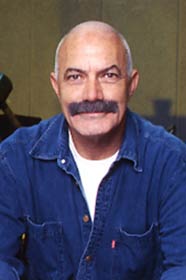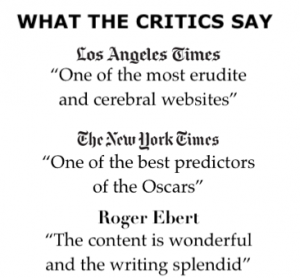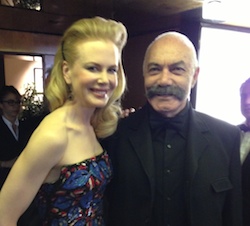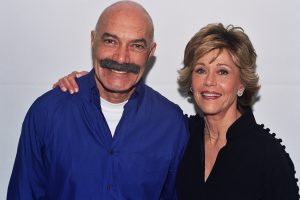Martin Scorsese’s “Alice Doesn’t Live Here Anymore” is considered to be a turning point, because it was the first major film in a long time to feature a strong role for a woman. As is well documented, paradoxically, the New American Cinema (roughly 1967-1975) offered few substantial roles for women, and is regarded by many critics to be a sexist phase, perhaps reflecting an ideological backlash against the nascent feminist movement and the progress women were beginning to make in real life.
Ellen Burtsyn, who won the Best Actress Oscar for this film, was instrumental in bringing the project to the screen, hiring a young director (Scorsese) and a team of women to serve behind the camera.
Thematically and ideologically, however, Alice Doesn’t is a compromising film and far from the feminist work it had intended to be.
The story’s heroine Alice Hyatt is a recent young widow, struggling to launch a new life for her and her adolescent son, Tommy (Alfred Lutter). Victimized by her husband Donald (Billy “Green” Bush), a truck driver who had taken her for granted as mother and wife, she is at first shocked when he gets killed in a highway accident, but there’s also a sense of relief of not having to please anymore and not being taken for granted.
On the plus side, Alice Doesn’t offered a new type screen heroine, feisty, sarcastic, and even self-mocking. Robert Getchell’s densely rich Oscar-nominated screenplay provides a perceptive view at one woman’s odyssey to find herself.
As written and played by Ellen Burstyn, this Alice combines elements of Katharine Hepburn’s will force (in Alice Adams, amongst many films), Shirley MacLaine’s gamine-like vulnerability, and Barbara Streisand’s zaniness.
A road comedy, Alice Doesn’t was set in the countryside, then a less familiar territory in American films. Alice drives a station wagon from New Mexico to Arizona, and then continues to her hometown in Monterey, California. The landscape includes motels, diners, drive-in restaurants, gas stations, rest areas, all icons of country life, seen effectively in Jonathan Demme’s 1980s comedies (Melvin and Howard, Something Wild).
The relationship between Alice the mother and Tommy her boy is new, too. They interact in a free, informal, and spontaneous way. In some scenes, they are sibling rather than mother and son, with Tommy substituting for the missing male in Alice’s life, offering advise, companionship, and support she doesn’t get form strangers. Watch out for the young Jodie Foster, who made her screen debut in this film, as Tommy’s mate. (Two years later, Scorsese would cast Foster as the teenage-prostitute in Taxi Driver).
The Alice-Tommy scenes together, along with those between Alice and a waitress friend Flo (played with exuberance by Diane Ladd) offer the film’s major comic moments of film. The sequence in which Alice and Flo lock themselves in the restroom to discuss Alice’s emotional problems while the diner is at its busiest is a riot.
The two men in Alice’s life represent recognizable types. First, there is Ben Everhart (Harvey Keitel), a volatile, even violent married man who assaults Alice physically, thus signaling the potential danger that awaits an unattached, sexually desirable woman. Keitel’s Ben is contrasted with the sensitive and gentle David (Kris Kristofferson), a peaceful farmer, who functions like a knight in a fairy tale; he’s everything a woman could hope for, down to using the word “please” when he talks to her. Dreaming about Robert Redford, Alice actually gets a prince.
The critic Robin Wood has noted that Alice Doesn’t and the later Mazurski’s 1978 film An Unmarried Woman (in which the sensitive male is played by Allan Bates) offer equality, but not liberation, between the sexes, and that even the equality is precarious and compromised.
For the Canadian critic Robin Wood, the movie goes out of its way to restore the patriarchal order, though in a suitably modified way. At he end, Alice becomes dependent again, settling into what seems to be a second complacent relationship, albeit with a man who will treat her well, permit discussion, and perhaps even allow her to pursue her own career
For other scholars, as charming as the film is, it serves an example to what the French intellectual Roland Barthes has called “Inoculation,” namely a film in which dominant ideology inoculates itself with a small dose of criticism in order to distract attention from its fundamental issue, in this case, women’s liberation.
Scorsese approaches the material as a comedy, replete with outrageous and exaggerated incidents, and the end result is an energetic, fast-moving film full of funny malice and absorbing vitality. And he coaxes wonderful performances from his ensemble: Oscar-winner Burstyn and Oscar-nominated Ladd, Keitel and Kristofferson as the divergent men, and Lutter and Foster as the kids. Laura Dern, actors Diane Ladd and Bruce Dern’s real-life daughter, could also be spotted briefly.
The popular success of Alice Doesn’t Live Here Anymore showed that there was interest in women’s stories and that they were commercially viable. The story was later reworked as a long-running TV sitcom called Alice and led to a cycle of major Hollywood films about women, such as Annie Hall, Unmarried Woman, Norma Rae, and others.










